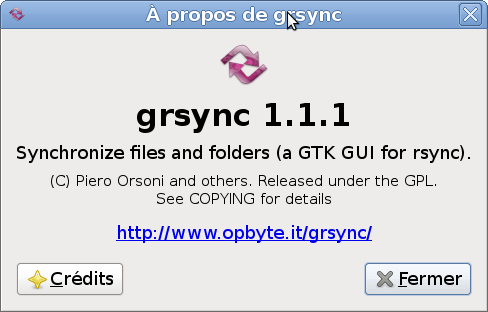
Socketpairs, hardlinks, symlinks, IPv6, batchfiles, inplace,Īppend, ACLs, xattrs, iconv, symtimes, prealloc I am using Debian 10 Buster and this is the screen output: :~$ rsync – versionĬopyright (C) 1996-2018 by Andrew Tridgell, Wayne Davison, and others.Ħ4-bit files, 64-bit inums, 64-bit timestamps, 64-bit long ints, In the end, you can check the installed version with the following command. So, for Arch Linux and derivatives: :~$ sudo pacman -S rsyncĪnd if you use OpenSUSE 15.1 or Tumbleweed, just run this command: :~$ sudo zypper in rsync
ISNTALL GRSYNC INSTALL
In the case of CentOS or Fedora: :~$ sudo dnf install rsync

So, open a terminal and execute some of these commands according to the distribution you use.įor distributions like Debian, Ubuntu, and derivatives like Linux Mint, Pop!_OS or ElementaryOS: :~$ sudo apt install rsync However, if for some reason it is not there you can install it very easily. Rsync is usually installed on most popular Linux distributions. So, with some examples, we will explain how this command works.

These synchronizations are copies of directories or files, but they are done in an advanced way. Rsync is present in the official repositories of many Linux distributions like Debian, Ubuntu, CentOS, and others.Īlso, the Linux rsync command has many different options that allow you to modify the way synchronizations are performed.

In Linux, this task is fully accomplished by the rsync command. Usually, you need to perform folder synchronizations on different computers.


 0 kommentar(er)
0 kommentar(er)
